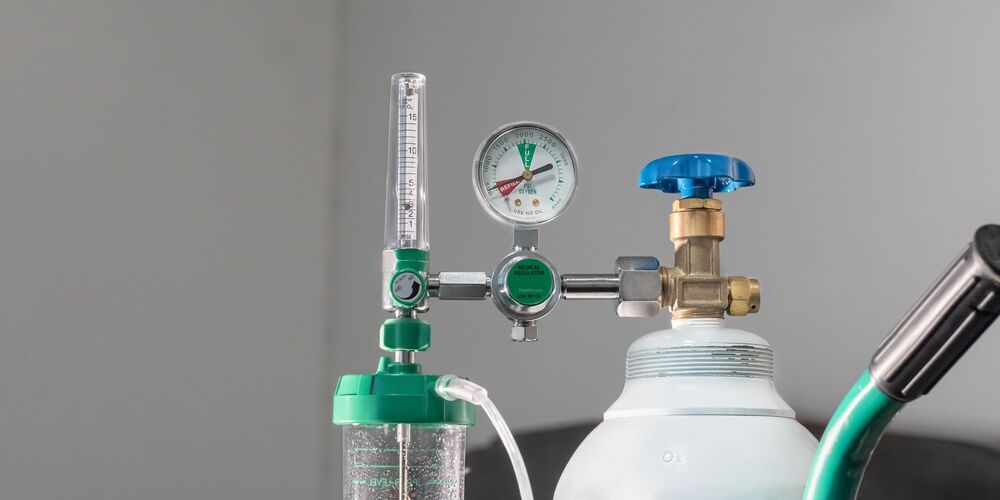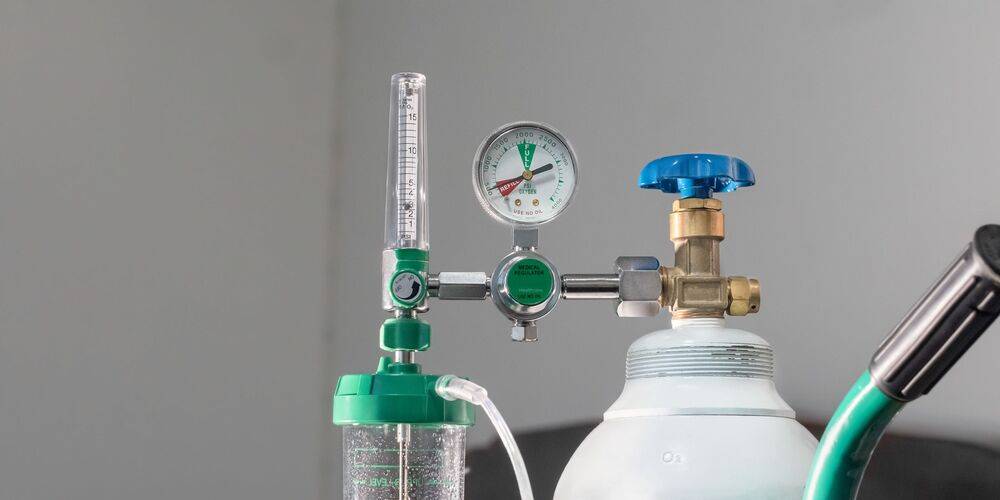
Oxygen Therapy 101
0 Comments
Oxygen Therapy 101
Dec 8, 2023, By Shilpa Unnikrishnan
Did you know 1.5 million Americans turn to supplemental oxygen? Here's your comprehensive guide to understanding more about oxygen therapy.

We all know oxygen is vital for our survival. Oxygen Therapy is a treatment technique that offers a higher concentration of oxygen than what is available in the ambient air to persons with lung diseases or respiratory challenges. Oxygen Therapy can help you improve your energy, sleep better and ultimately enhance your quality of life.
This supplemental (or extra) oxygen can be administered in various ways, depending on the user’s needs and the nature of the respiratory condition. The primary goal is to ensure that the body is receiving an adequate supply of oxygen for meeting its physiological demands, supporting vital functions and promoting overall well-being.
Am I the Right Candidate for Oxygen Therapy?
Chronic Obstructive Pulmonary Disease (COPD)
Asthma
Pneumonia
Cystic fibrosis
Heart failure
Sleep apnea
Lung cancer
What Does Oxygen Therapy Do?
What is a Healthy Oxygen Level?
What Causes Your Oxygen Saturation to Drop?
How to Determine the Ideal Amount of Oxygen for Me?
Is it Acceptable if I Use More or Less Oxygen than Prescribed?
How Can Supplemental Oxygen Help Me?
Feel less short of breath: Administering oxygen helps you reduce your breathlessness or shortness of breath.
Feel less fatigued: You become very tired when your body is not getting sufficient oxygen and even doing simple activities can be challenging. Inhaling supplemental oxygen improves the oxygen circulation to your bloodstream, thereby improving your energy levels.
Sleep better and wake up rested: If you’re someone with lung issues, you may find it difficult to get a restful night’s sleep. There are various factors contributing to this. A notable one is a decline in blood oxygen levels overnight. Incorporating oxygen therapy at night facilitates increased oxygen intake, improving the quality of your sleep.
Improve your energy: Using supplemental oxygen may help you improve your energy levels and bring you back to the activities you love. Whether it’s exercise, running errands, doing chores, or even flying, many people with lung issues benefit from using oxygen therapy. Feeling anxious about limitations? Fear not; you can still enjoy all your favorite activities while using oxygen. When your body gets an adequate supply of oxygen, you’ll have more energy to stay active.
Are There Any Side Effects of Oxygen Therapy?
Safety Considerations
Strictly follow the prescribed amount of supplemental oxygen recommended by your healthcare professional.
The Food and Drug Administration (FDA) cautions against taking insufficient oxygen, which can result in hypoxia and potential harm to vital organs such as the heart and brain. On the other hand, inhaling excessive oxygen can lead to lung damage.
Ensure a safe environment when handling oxygen. Avoid exposure to smoking, open flames or anything that generates heat, as oxygen helps in combustion.
Choose water-based moisturizers for applying on your skin and avoid products containing vaseline and oil as they’re flammable.
Types of Oxygen Therapy Systems
Oxygen Concentrator: This is a machine that filters the ambient air that contains 21% oxygen and helps the user inhale 90%-96% of pure oxygen. This device operates on power or a battery.
Read more about O2E2 Oxygen Machines here.
Oxygen Cylinders: Oxygen Cylinders/ Oxygen Tanks contain oxygen under high pressure in a metal cylinder and are used as a conventional method of Oxygen Therapy. These cylinders or tanks contain 100 percent oxygen. Large cylinders are bulky, expensive and can be used in the home. For travelling purposes, small cylinders can serve oxygen needs.
Liquid System: In this system, oxygen is cooled to -182.8°C to make it into liquid form and stored in storage canisters to keep the cooling effect. This liquid gets converted into gaseous form when exposed to warmer temperatures. This gas is then delivered to the user through the oxygen administration device. This system delivers 100 percent oxygen. According to the American Lung Association, these systems are usually prescribed for persons who need higher oxygen levels, usually 6 LPM or above.
Hyperbaric Oxygen Therapy: Hyperbaric Oxygen Therapy, HBOT in short, is unlike other Oxygen Therapy techniques. HBOT involves inhaling 100% pure oxygen in a specially designed pressurized chamber. The air pressure inside the chamber is increased to a higher level (2-3 times) compared to the normal atmospheric pressure.
This elevated air pressure in the chamber can deliver oxygen into all body fluids, including the plasma, the lymphatic system, the cerebrospinal fluid in the central nervous system, and the synovial fluids in the bones. HBOT is often used for accelerating the healing of serious wounds, infections in hypoxic tissues, effects of carbon monoxide poisoning and gas gangrene.
Exercise with Oxygen Therapy: Exercise with Oxygen Therapy is the dynamic approach to incorporating supplemental oxygen into your daily routine as it couples oxygen intake with physical activity.
Is Exercise with Oxygen Therapy an Oxygen Therapy Technique?
Athletes who wish to accelerate their performance levels and improve recovery time.
Young folks and aged persons who desire to stay fit and improve their well-being.
Persons experiencing recurrent episodes of shortness of breath, dizziness, fatigue and lack of energy.
Those who desire to invest in their wellness, slow down the aging process and reduce their chances of future ailments.
Fitness fanatics who wish to improve their exercise tolerance.
Understanding the Differences Between Oxygen Therapy and EWOT
Oxygen Therapy:
Purpose: Primarily addresses medical conditions by offering a continuous/controlled flow of oxygen
Application: Generally administered at rest to patients requiring supplemental oxygen
Delivery: Static delivery system
Delivery Devices: Nasal cannula
Focus: Mainly focuses on maintaining and stabilizing oxygen levels in the bloodstream
General Settings: Hospitals, clinical facilities and home care
EWOT:
Purpose: Integrates physical activity with supplemental oxygen for fitness-wellness improvements
Application: Involves engaging in physical activity while breathing in supplemental oxygen
Delivery: Dynamic approach that encourages movement during oxygen intake
Delivery Devices: Specialized masks connected to an Oxygen Reservoir Bag
Focus: Optimizes the body’s oxygen utilization during exercise, potentially improving energy, endurance, fitness and overall well-being
General Settings: Fitness/Wellness centers and personal home workout spaces
Bottom Line
FAQ
Can I become addicted to oxygen?
No. Oxygen is a non-habit-forming, non-addictive gas. Many users are concerned about this and try to reduce the time of oxygen therapy or completely stay away from it. Administering supplemental oxygen is a method that can help persons who have low oxygen levels in their bloodstream due to some acute or chronic respiratory conditions.
If the lungs have become weak, the extra pure oxygen will make it function as normal, healthy lungs. You can also incorporate supplemental oxygen into your exercise regimen to accelerate wellness by utilizing an extra boost of energy.
How long do I need to be on oxygen?
That hinges on why oxygen was prescribed in the first place. For instance, if you are dealing with a respiratory infection, you may only need oxygen until the infection resolves and your blood-oxygen levels return to normal. On the other hand, if you have chronic low blood-oxygen levels due to a persistent lung condition, you may find yourself in need of long-term oxygen therapy.
Considering Exercise with Oxygen Therapy (EWOT), inhaling pure oxygen using an oxygen machine can raise the heart rate and internal pressure. Consequently, the inherent ability of the body to increase the natural process of oxygen transport from lungs to tissues is utilized in order to increase the oxygen levels in the tissue.
Will I need oxygen during sleep?
Generally, if you are using supplemental oxygen during the day, you need to use it at night. The reason is that the breathing rate during sleep tends to slow down. Some people may need supplemental oxygen only during sleep. Your physician will determine whether you require extra oxygen while sleeping.
Is there any difference in effectiveness between the oxygen coming out of the oxygen machine and that from an oxygen cylinder?
You might feel that the oxygen coming out of the machine is less effective than that of the oxygen coming out from the oxygen cylinder. This is because the temperature of the oxygen delivered by the machine is identical to that of room temperature. However, studies have shown that the effectiveness of oxygen delivered by both sources is practically the same.
Which oxygen therapy system is right for me?
Your healthcare provider can suggest the system that best fits your lifestyle and oxygen needs. The following factors can be considered:
- Consider your physical activity levels and the nature of activities that you engage in.
- Assess your physical strength and mobility, ensuring that the chosen system aligns with your capabilities.
- Evaluate how frequently you leave home and the amount of time spent away, as this will influence the portability requirements of the oxygen system.
- Your personal preferences and lifestyle choices
Is prescription mandatory for using supplemental oxygen as a part of a regular exercise regimen?
No. If you wish to use supplemental oxygen as part of your workout routine, a prescription is not mandatory.

Meet Mike White
Meet Michael Grant White, the Optimal Breathing Coach and get actionable insights on your breathing development, health and longevity



